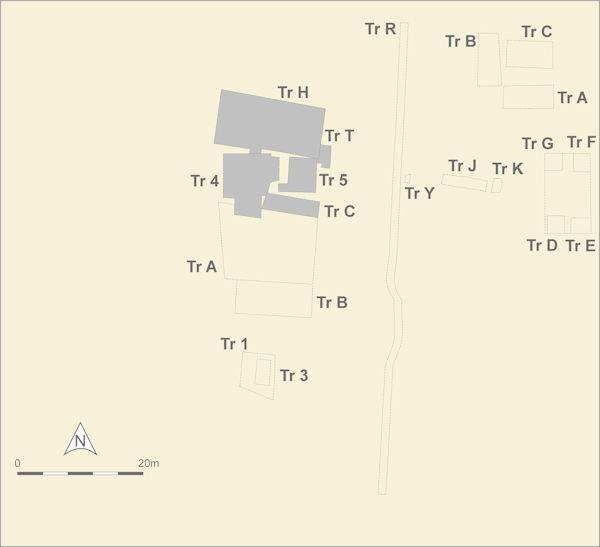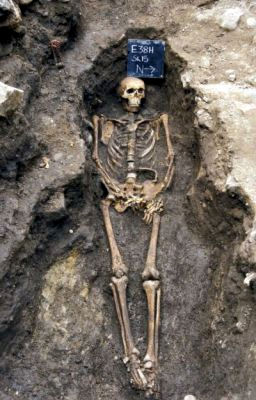

A small number of burials took place within the church during this phase. The latest burial within the church SK 215 [Photo 0269] had been buried within a deep grave cut and at an angle with the feet of the burial being at a much higher level than the head. The head end of the burial had probably slumped into an earlier grave underneath. Burials in this phase included SK 20, SK 23, SK 26, SK 27, SK 32, SK 34, SK 35, SK 37, SK 38, SK 39, SK 40 and SK 215. SK 40 was radiocarbon dated to 1560 AD±50 years.

A small stone was found upright [Photo 0108] at the head of the burial place of two small children (SK 32 and SK 37. As it is thought that burial may have been carried out at Aberdeen in the empty shell of the stone church after the Reformation, and as SK 32 and SK 37 seem to be among the latest burials, it seems fair to suggest that the stone is indeed an ad hoc attempt at a grave marker.

The West Range buildings continued in use during this period although no activity can be specifically associated with this sub-phase.
Internet Archaeology is an open access journal based in the Department of Archaeology, University of York. Except where otherwise noted, content from this work may be used under the terms of the Creative Commons Attribution 3.0 (CC BY) Unported licence, which permits unrestricted use, distribution, and reproduction in any medium, provided that attribution to the author(s), the title of the work, the Internet Archaeology journal and the relevant URL/DOI are given.
Terms and Conditions | Legal Statements | Privacy Policy | Cookies Policy | Citing Internet Archaeology
Internet Archaeology content is preserved for the long term with the Archaeology Data Service. Help sustain and support open access publication by donating to our Open Access Archaeology Fund.